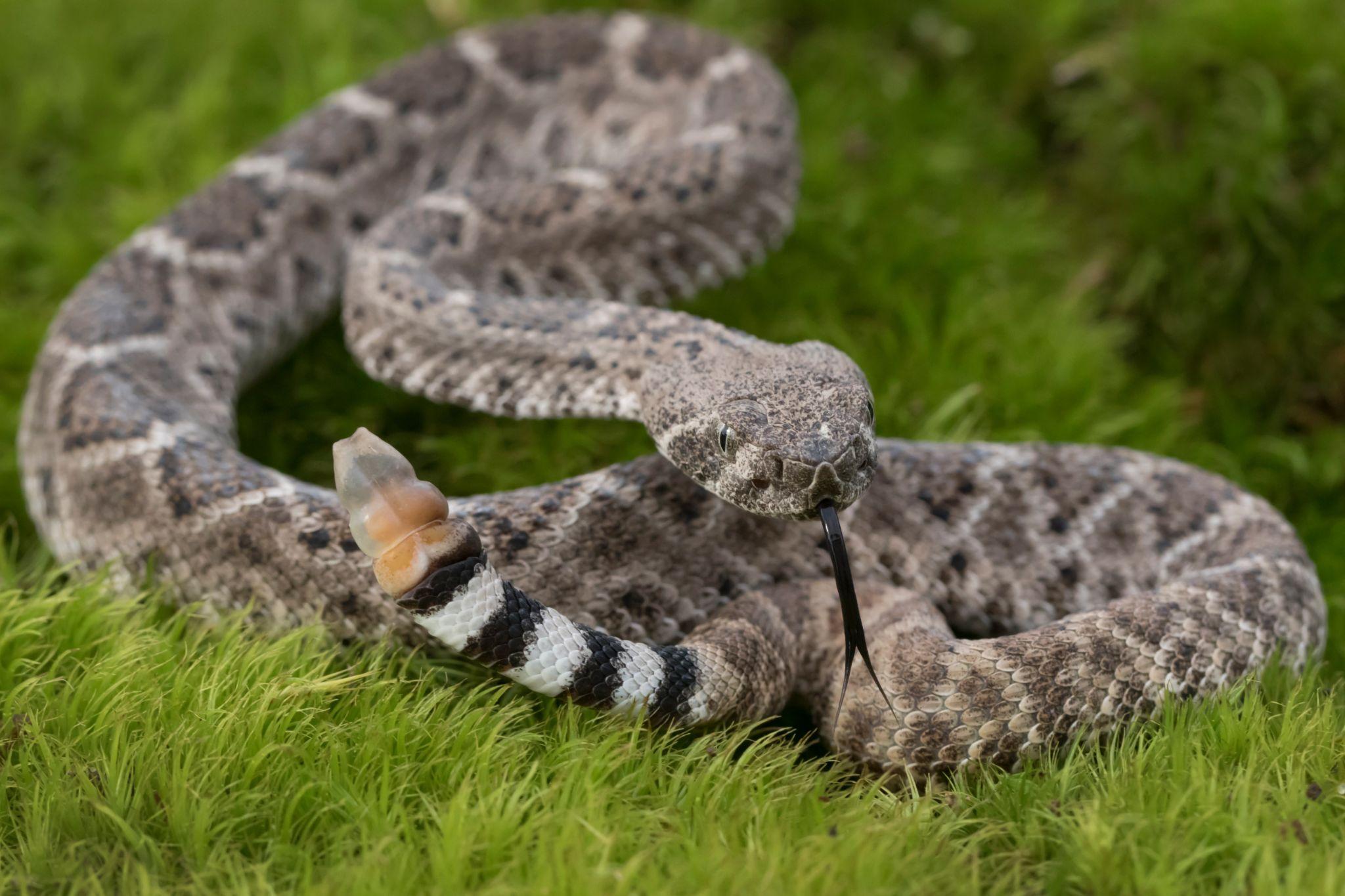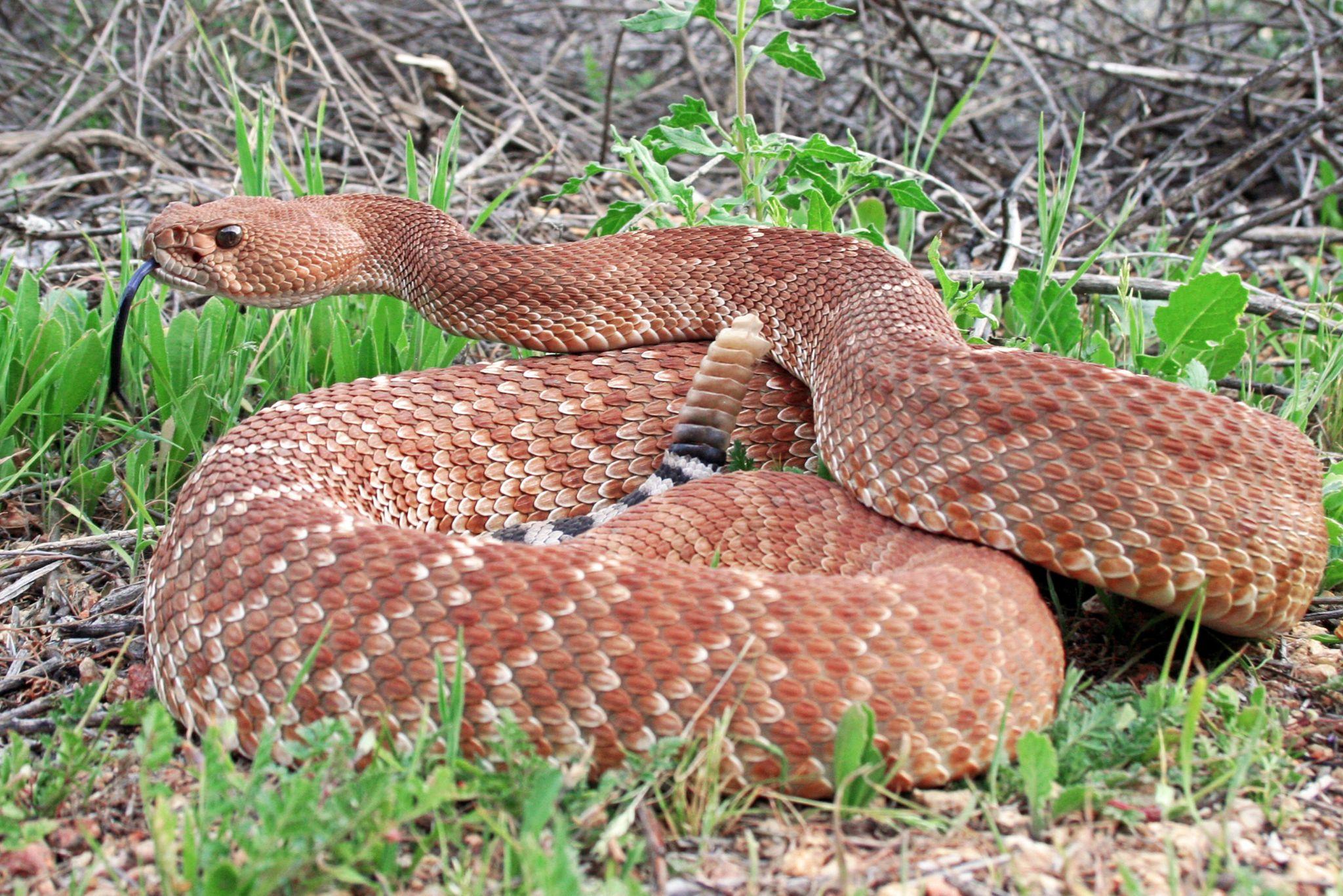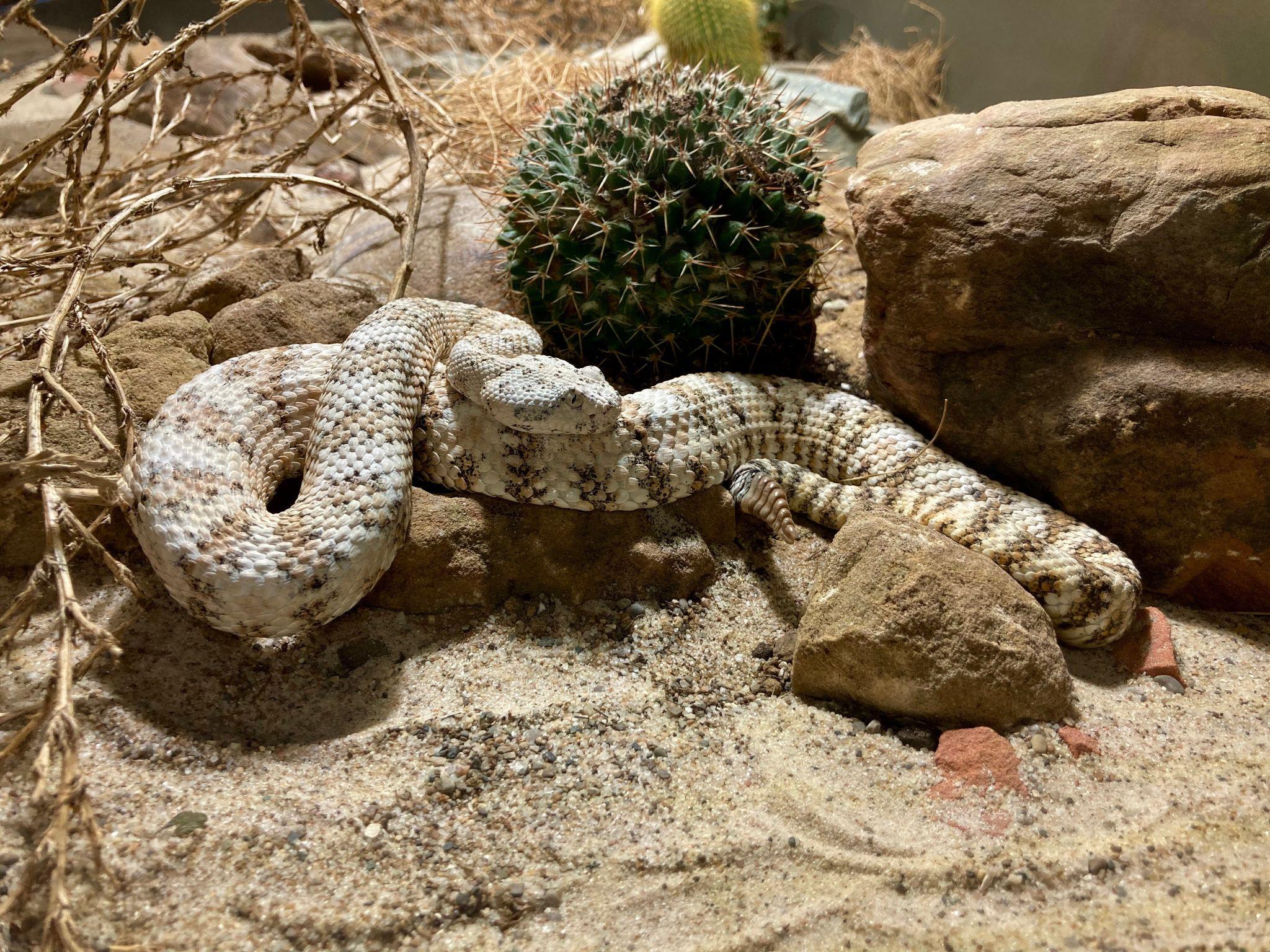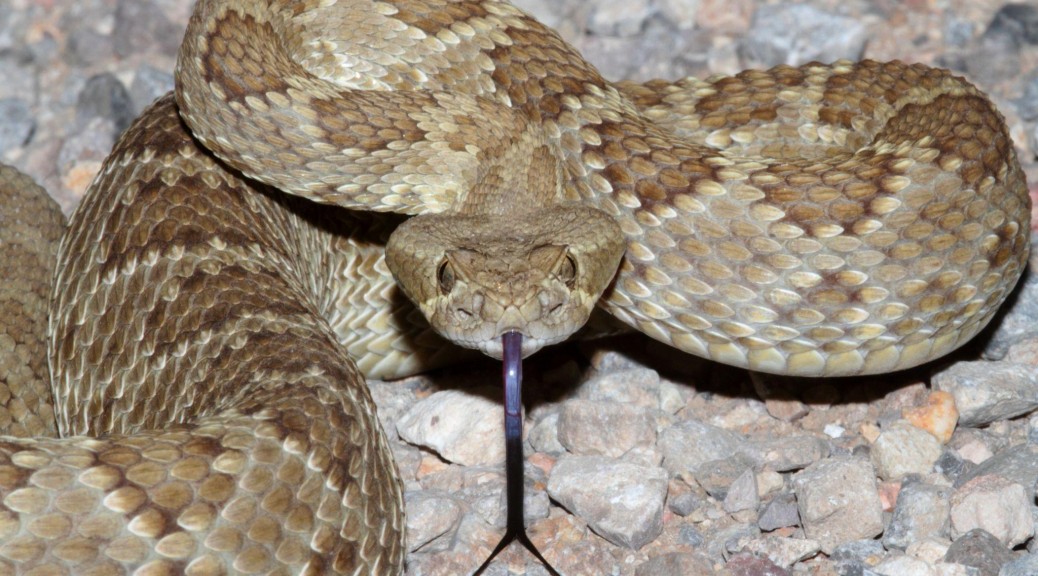California is home to several native snakes. While it’s possible to get bitten by any snake, there are several rattlesnake species and subspecies found here that are venomous. Here are the poisonous California snake species that you should be aware of.
Mojave
The Mojave Rattlesnake (Crotalus scutulatus) holds the titles for deadliest pit viper and most venomous snake in California and the world. This is because their venom is both hemotoxic (destroys blood vessels) and neurotoxic (can destroy nerves and nerve tissue). Left untreated, a snake bite from the Mojave will be fatal.
This snake’s bands are different sizes, unlike the Western Diamondback, whose bands are equally sized. It can be tan, yellow, gray, green, or brown in color, and it grows to be between three and four feet long.
Western

The Western Rattlesnake (Crotalus oreganus) actually describes three snake species, all venomous. Their venom is myotoxic (can destroy muscle cells), hemotoxic, and neurotoxic. If you think you’ve been bitten by this snake, get antivenom as soon as possible, as going untreated can be fatal.
Greenish gray or brown in color, this snake is often mistaken for a gopher snake. Markings appear as dark brown spots that are ringed by a lighter color on the back and sides, with a similar spot on the snout. It can be between three and five feet long.
Red Diamond

The Red Diamond Rattlesnake (Crotalus ruber) is an occasional climber whose venom represents the least potent of California’s venomous snakes. However, because it injects more venom than others, this rattlesnake’s bite is no less dangerous than a bite from other species.
This snake is easily identified by the black and white bands on its rattle, as well as the pale-bordered red diamond shapes on its back. A juvenile won’t have red diamonds, but it will have black and white bands on its rattle segment. Adults can grow to between three and five feet in length.
Southwestern Speckled

The Southwestern Speckled Rattlesnake (Crotalus mitchellii) has one subspecies; namely, the Panamint rattlesnake (Crotalus mitchellii stephensi). Both are common snakes in Southern California. Dormant during winter, the chemical composition of this pit viper’s venom is largely unknown. However, a bite can cause pain and necrosis, and the latter can lead to the need for amputation.
Identifying this snake can be difficult because the color combinations of its scales can vary so widely. However, it does grow to between 36 and 48 inches in length, with most individuals displaying brighter-colored banding toward their tails.
Need a Poisonous California Snake Removed?
If you notice any of the above dangerous snakes on your property, always be calm and slowly back away from them. Never try to agitate a snake by trying to poke it or pick it up. If you’ve been bitten, never try to treat a bite yourself. Instead, head to the nearest emergency room for evaluation.
Animal Capture Wildlife Control has over 20 years of experience in the safe and humane removal of wildlife in California. Visit us online to learn more.




